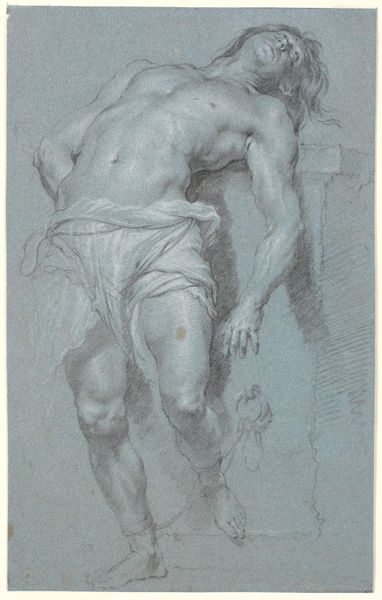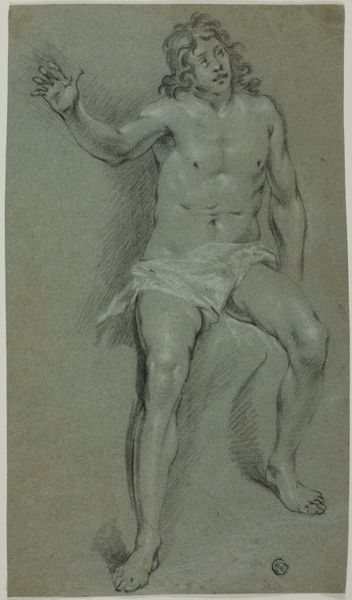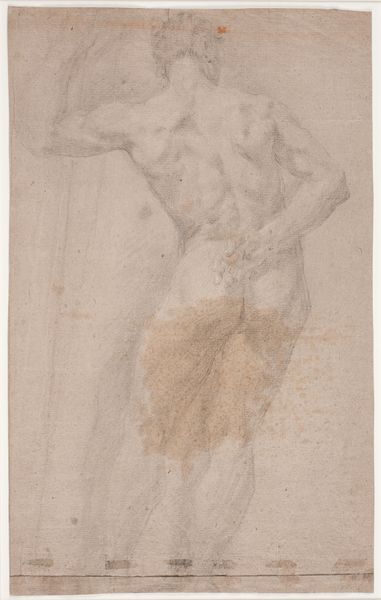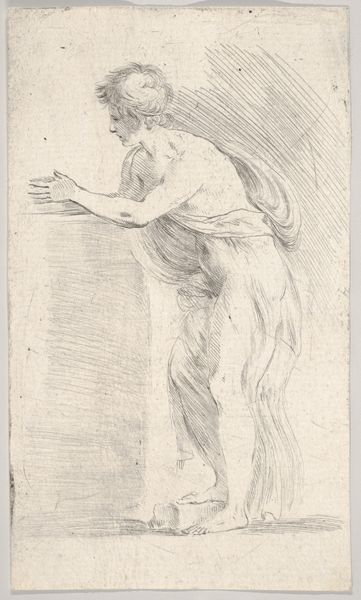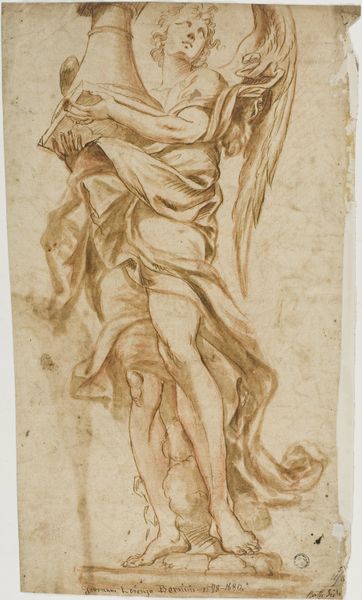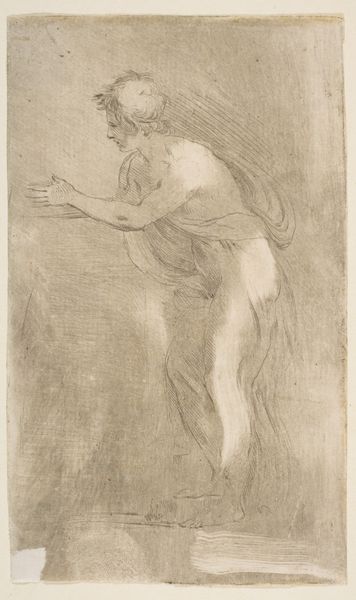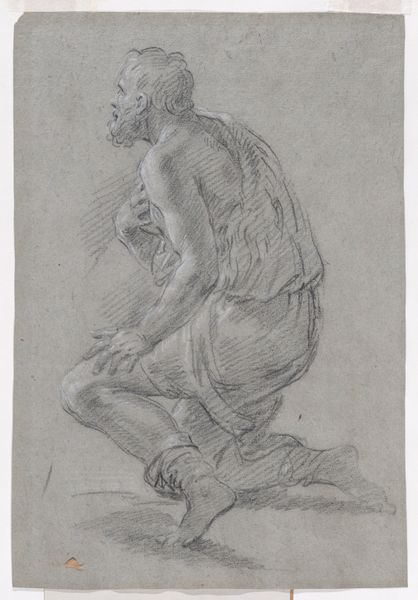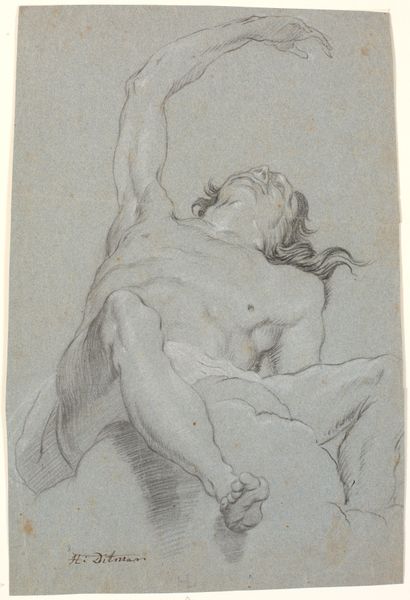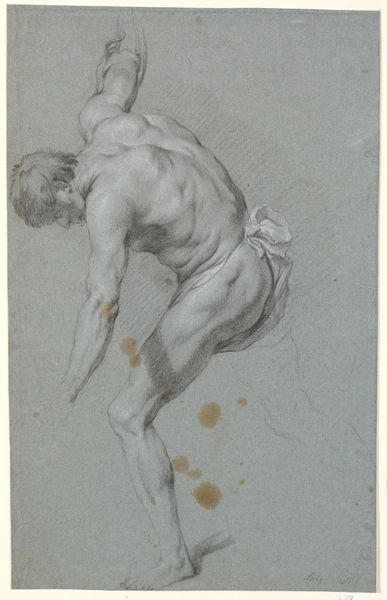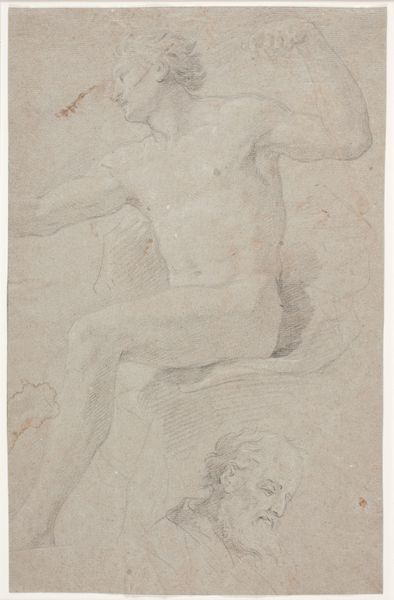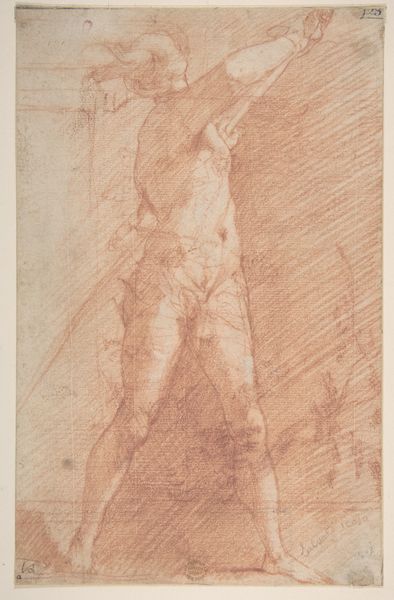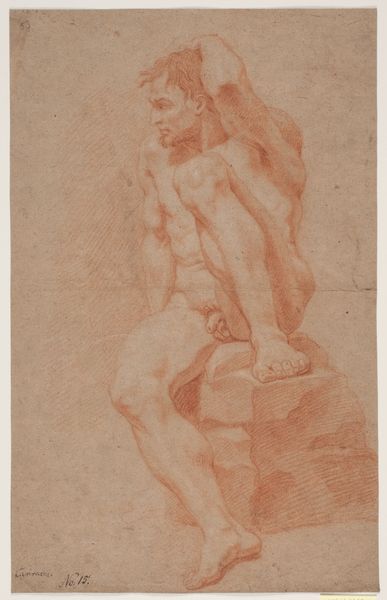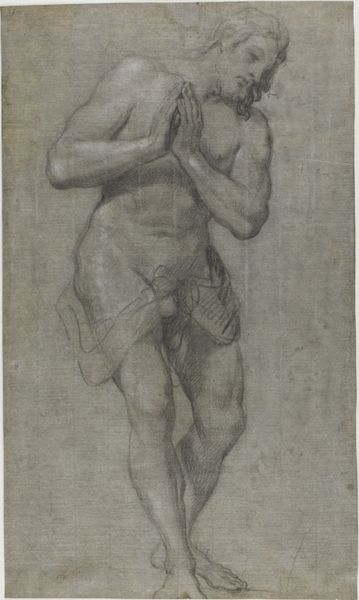
drawing, pencil, charcoal
#
drawing
#
baroque
#
pencil sketch
#
charcoal drawing
#
figuration
#
pencil drawing
#
pencil
#
charcoal
#
nude
#
realism
Dimensions: 418 mm (height) x 216 mm (width) (bladmaal)
Curator: Heinrich Dittmers created this intriguing study, "Standing Male Model, Seen From the Back," sometime between 1625 and 1677. It’s a pencil and charcoal drawing housed here at the SMK. My first impression is of strain – a figure captured mid-action, bearing some unseen weight. Editor: Indeed, there's a sense of both strength and vulnerability conveyed by the rawness of the drawing. Note how Dittmers uses light and shadow to sculpt the muscles, emphasizing the physicality of the figure. What purpose might this study have served, and how does the model figure into larger narratives around labor and identity during this period? Curator: Considering the artist and time, this may have been intended as an exercise for a larger, history painting. Observe his careful attention to anatomical correctness. He’s less concerned with capturing an individual likeness and more invested in the ideal proportions of the male form. There is clear Baroque influence with a nod towards Realism in the details. Editor: Perhaps, but let’s not overlook the societal implications. During this era, the male nude was freighted with connotations of power, sexuality, and societal expectations. Who was this man, and what did it mean for him to be rendered in this way? Was there consent and awareness about how this form might contribute to established social hierachies, gender norms or aesthetics linked to power? Curator: It's also the strategic positioning, though. The fact that we see the figure from the back abstracts him, and transforms him into a vessel – an articulation of lines and curves rather than a statement about character. Editor: While you fixate on the artistic and symbolic, I see the drawing not just as a formal exercise but as a glimpse into a specific human experience, filtered through the power structures of the 17th century. What does the physical exertion depicted mean to those bodies pushed beyond the limit in various global production regimes still today? Curator: So we might read Dittmers as capturing not just form, but also a fleeting expression, even a struggle within that form. Editor: Precisely, this shifts our reading toward empathy. Curator: Very well; from its composition and line, we can read an artwork as a story not yet entirely told, with each of us finding some small piece that connects to our current experience of art and of living. Editor: Agreed; looking closely opens dialogues not only about then, but also about us, here, now.
Comments
No comments
Be the first to comment and join the conversation on the ultimate creative platform.
